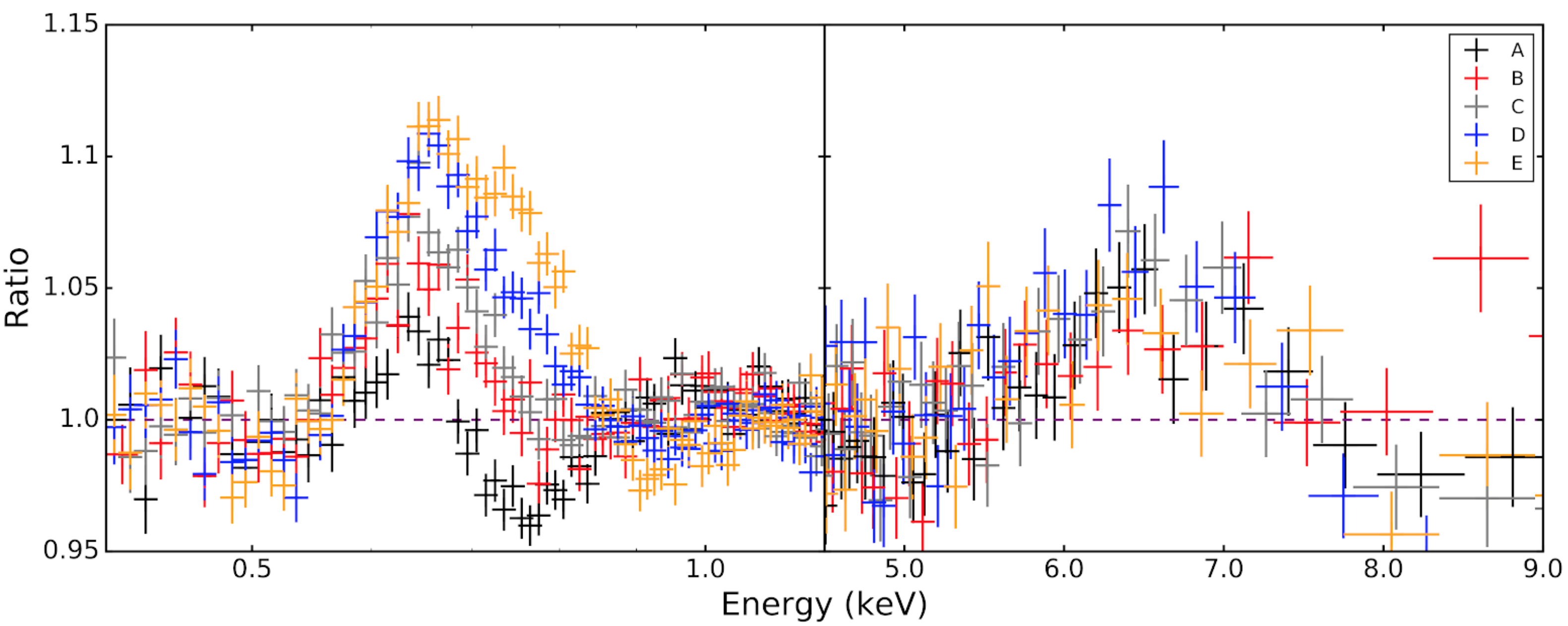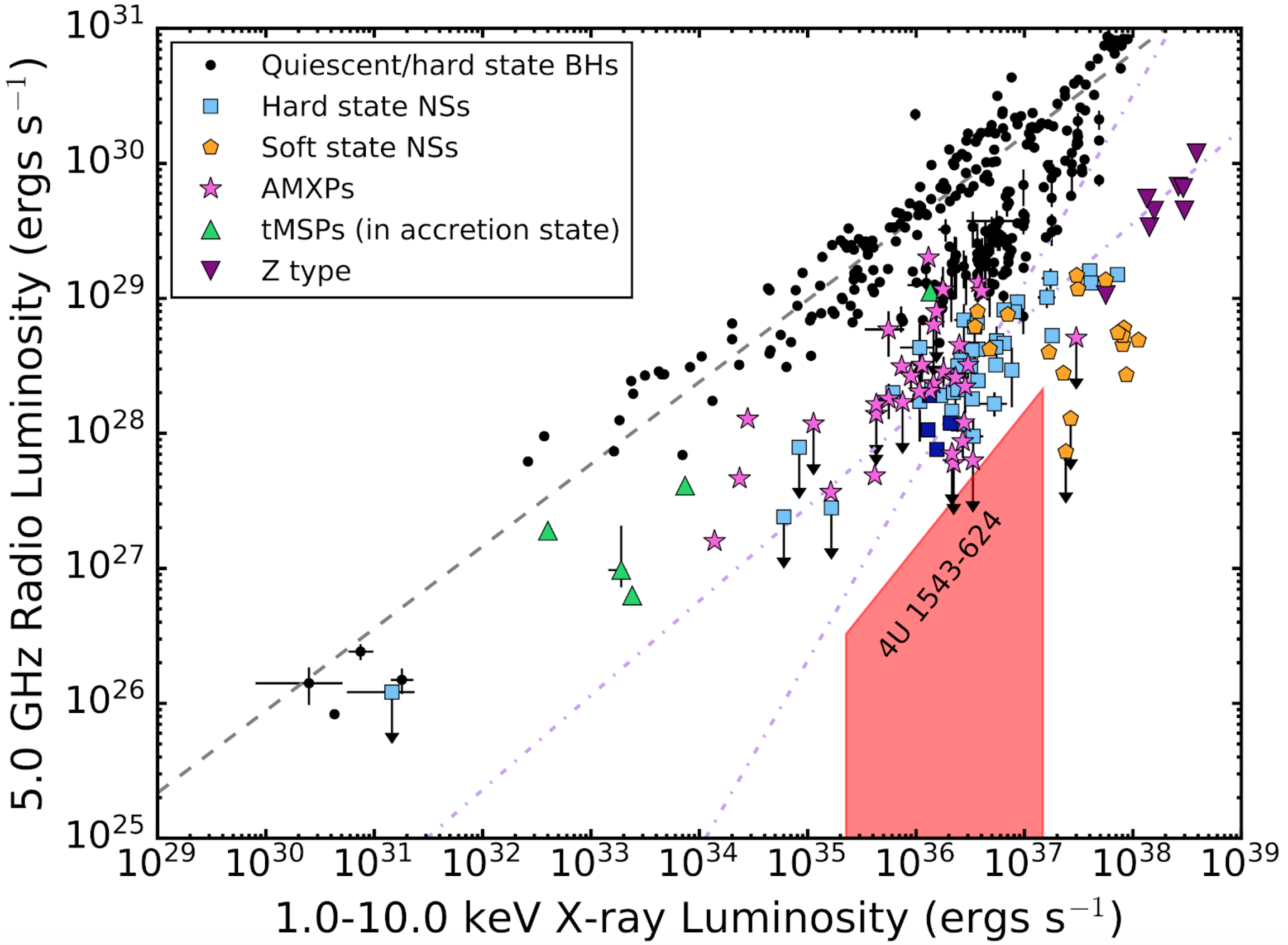NICER / ISS Science Nugget
for August 22, 2019
NICER reveals the intricacies of the innermost accretion disk
in an ultra-compact X-ray binary
Ultra-compact X-ray binaries consist of a neutron star or black hole that is accreting, typically, from a "degenerate"
companion star (i.e., one that has collapsed after exhausting its nuclear fuel) in a binary orbit of less than 80 minutes.
NICER observed one of these sources, 4U 1543-624, during an outburst that lasted approximately 10 days. We detect strong
emission features in the NICER X-ray spectrum from iron and oxygen (Figure 1) that become broader with time (labeled A
→ E). These features arise from the material closest to the accreting object; therefore, the lines are broadened by the
rapid motion and strong gravity in this region. This thereby enables us to measure the position of the inner accretion
disk based upon the degree of broadening of these lines.

Figure 1:
Spectral features from oxygen (left panel, around 0.6 keV photon energy) and iron (right panel, 7 keV) atoms in NICER
X-ray data from the ultracompact accreting binary 4U 1543-624. Both lines, but the oxygen feature in particular, grow
stronger and broader with time (colored points labeled A through E), indicating that the atoms swirling in the accretion
disk are moving faster and more deeply into the gravitational well of the accreting star,
most likely a neutron star.
The 10-day NICER monitoring campaign, combined with observations from NASA's Swift and ESA's INTEGRAL telescopes, allowed
us to measure the system's evolution across the outburst, such as an increase in temperature of the surrounding material
as the disk moved toward the compact object. Additionally, we obtained radio observations with the Australia Telescope
Compact Array that enable us to compare the X-ray and radio properties of 4U 1543-624 to other accreting objects (Figure
2). The location of 4U 1543-624 on the radio/X-ray "fundamental plane" (shaded red region) supports the notion that the
system contains a neutron star accretor and provides further evidence that neutron stars can exhibit a wide variety of
accretion behavior.

Figure 2:
The so-called "fundamental plane" of radio vs. X-ray luminosity for many known black-hole (black circles) and neutron-star
(all other symbols) accreting systems. The red-shaded region (large because of the uncertain distance) represents our
measured properties of 4U 1543-624, which is clearly inconsistent with the population of black-hole binaries and is even
atypical of most neutron star systems.
This work, "Observations of the Ultra-compact X-ray Binary 4U 1543-624 in Outburst with NICER, INTEGRAL, Swift, and
ATCA" by Dr. Renee Ludlam, was published in The Astrophysical Journal as NICER's 33rd peer-reviewed paper.
<< Previous
Main Index
Next >>